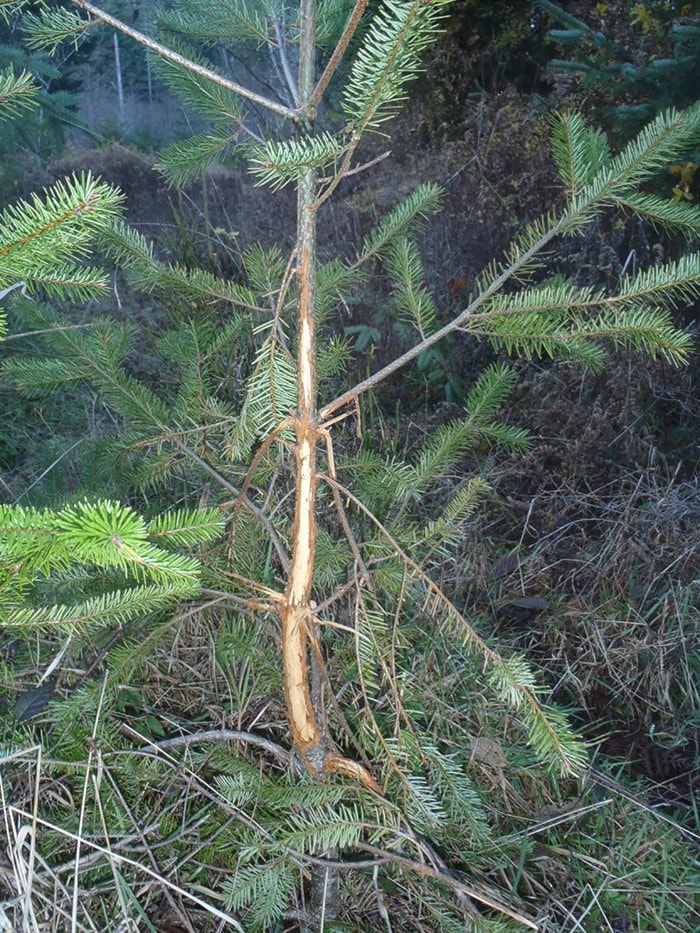There are several approaches to black-tailed deer hunting on Vancouver Island. One of the most popular and practical is road hunting where you drive along logging or back country roads in the hope of seeing a deer along the road or in an open logging area. It is productive and practised by many hunters.
Another type of hunting that is also popular is still hunting where you quietly walk along old roads, trails or paths through the woods hoping to see a deer as you progress through the forest. It is the most common method of hunting around farms and small woodlots. It is productive and leads to much more than deer hunting because you learn to look at the woods around you in a very different way.
I get the same type of high from a walk on the wild side as I get from fly fishing a quiet lake, and in either case I do not need to shoot or catch anything. Forests are full of birds, small animals, mushrooms, and interesting plants that make up the complicated ecosystems of wild places.
When we walk on the wild side our progress is slow, with frequent pauses while you look closely at the surrounding forest. The other day I was standing quietly in the middle of an old forest trail when I saw a large black cat slowly walking toward me along the trail. It was an infamous old feral cat that had been terrorizing the area for at least three years. He walked slowly up the trail until he was about 20 feet from me, and he suddenly realized I was a human being. What happened next was hilarious. For the first time in my life I saw a cat widen his eyes like searchlights, his hair stood out like it was electrified and he reversed direction and disappeared down the trail like a bewitched Halloween ghost.
Farther down the trail I came upon a small fir tree that had been stripped of its bark on one side as a black-tailed buck deer rubbed it with its antlers. In deer hunting jargon it is called a buck rub as shown in the picture. The size of the tree and the damage done to it indicated it was probably a small buck telling the local big guys he was looking for a girl friend and he was going to be boss – well maybe.
As is the custom of many who still hunt, we take time to sit quietly in secluded places for up to an hour at a time. This can be formalized with special blinds and last for the better part of the day. We select these places along well-travelled deer trails, or as is often the case they overlook a meadow, small field or special feeding area.
Deer come into these choice places and frequently if the deer is legal and what the hunter wants the hunt ends there. I was sitting quietly on a well-used trail the other day and a large two-point suddenly appeared about 20 feet away – we were both surprised. He zigged and I zagged and he lived to tell the tale, but it really did make my day.
Smitty and I are what are called meat hunters in the jargon of hunting. By that definition we normally take the first legal animal we can reasonably shoot at relatively close range so there is no chance of messing up the shot. It also defines our reason for hunting – harvesting wild organic meat in a safe manner – that simple.
We hear much about deer and other wildlife problems in urban and agricultural areas on the local news these days. They are planning a deer cull in Oak Bay in 2014 according to local press. In agricultural areas I believe responsible hunting could go a long way in helping to solve deer problems, but I confess I do not know the best answer for controlling urban deer except to have deer-proof fences around your vegetable garden. However you must be prepared for rabbit stew if these animals are a problem in your garden.
• • •
Next week I will try to have the statistical information on the small stream enhancement societies and their contribution to Area 14 saltwater fishing as promised last week. It is significant.
Ralph Shaw is a master fly fisherman who was awarded the Order of Canada in 1984 for his conservation efforts. In 20 years of writing a column in the Comox Valley Record it has won several awards.
